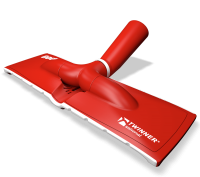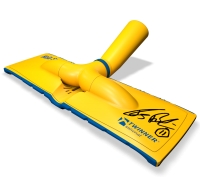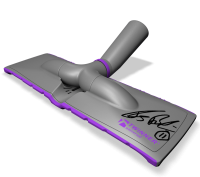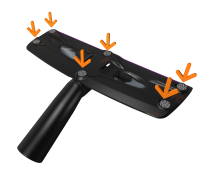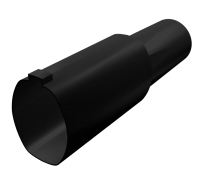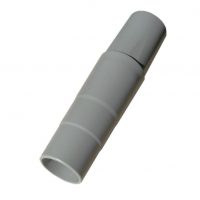Football Career – Early years
Brolin started out as a six year old playing soccer in Näsvikens IK where he later, already as a 14-year-old, was making his debut in the first team. He sought out then to Football High School in Sundsvall where he got GIF Sundsvall coach Anders Grönhagen as an instructor. The former Swedish international, who brought his team up three divisions in the league system, and was now in the Allsvenskan (Swedish premiere ship), saw the potential in the technical goal getter Brolin who was recruited to Gif Sundsvall. That same year, 1987, was Thomas to make his debut in the Allsvenskan – just 17 years old. Before the 1990 season, he was recruited by the reigning Swedish champions IFK Norrköping.
The breakthrough
Brolin’s breakthrough at the highest level in Sweden came in the opening game in 1990 when his IFK Norrkoping home defeat IFK Göteborg 6-0, including three goals from Brolin. It was also in this match as he spontaneously began to use the goal celebration styles (a jump up in the air, spinning a 360 turn counterclockwise with height right arm) which he subsequently always came to use when he scored a goal.
The road to quick stardom
Brolin continued to play well, and in the spring of 1990, Brolin took a place in the national squad. This under coach Olle Nordin, who first was hesitant to play with an until recently unknown 20-year-old. Brolin got his opportunity in a training international match before the World Cup in Italy, at Råsunda against Wales, and made instant success with two goals.Brolin started the opening game of the World Cup in Italy against Brazil, and made Sweden’s only goal in a match that ended 1-2, just as Sweden’s other matches in the tournament.
Turning Professional and awarded the Golden Ball in Sweden
During the World Cup, many clubs open their eyes to Brolin, and it was soon clear that he would leave Sweden for a professional life abroad. The newcomer AC Parma in the Italian Serie A eventually became the club that contracted him. He took a regular place in the team and became one of its most important players. In autumn Brolin was honored with Aftonbladet’s Golden Ball for best Swedish footballer 1990.
Titles with Parma
Parma formed Brolin into a quick and effective partnership with Alessandro Melli, who as well as Brolin only was 20 years old. Melli was striker who benefited from the playmaker Brolin in a trailing attacker role. Together, the duo made 20 goals, with seven goals and numerous assists for Brolin, when Parma in his debut season ended 5th in Serie A. For the first time in the history of the club, Parma qualified for Europe. During the season 1991/92 Brolin played in all 34 Serie A matches and scored 4 goals when Parma finished in 6th place. In Coppa Italia things went even better, both for Brolin and the team. Brolin made a total of two goals, one in the 1-1 meeting with Fiorentina and the other in the 1-0 victory over Sampdoria in the semi-finals. Parma then beat Juventus by a total of 2-1 over two games to lift the club’s first trophy in history. 1992/93 season Parma attended in the European Cup Winners’ Cup, and was strengthened with the foreign import Faustino Asprilla. Brolin played the whole game as Parma took the way to Cup Winners’ Cup final at Wembley, where Parma defeated Belgian Royal Antwerp 3-1.After the purchase of Gianfranco Zola and Massimo Crippa for the 1993/94 season, Brolin’s role in the team became another. Having successfully tried it out during the previous season, he now regularly played in an offensive midfield role, as a play maker. The club reached the final again in the European Cup Winners Cup, after beating teams like Ajax and Benfica on their way to the Final in Copenhagen, where they met Arsenal. Although Brolin did a very good match, including a bar shot, Parma lost 1-0.
International recognition
Before and during the European Championships in Sweden in 1992, Brolin was one of Sweden’s best players. This is when he accounted for two goals in the group stage (1-0 against Denmark and the decisive goal in the 2-1 match against England). Sweden became the first verdict in the semifinal against Germany, and Brolin later shared the title as the tournament’s top scorer with a couple of other players. At World Cup 1994 in the US, Brolin appeared in the finest form and after being demoted from attacker to midfielder from the second match, he became the Swedish team’s creative playmaker. He scored three goals in the tournament: 1-1-goal against Russia in the group stage (a penalty), 1-0-goal in the quarterfinal against Romania, and 1-0-goal in the bronze match against Bulgaria. Furthermore, Brolin assisted to several goals, including 2-0 – and 3-0 goals against Bulgaria in the bronze match. Brolin’s performance during the World Cup attracted great attention, and he was selected a place in the World Cup’s World Team, something that no other Swedish football player has been honored.
A Superstar
Brolin was now at the peak of his career and very popular with Swedish people, he was generally regarded as one of Sweden’s best footballers ever. In Parma, he was the hub the game revolved around, and in the national team, it appeared increasingly clear that coach Tommy Svensson often turned to Brolin to get his point when decisions on how to form the team would be taken.
The injury that changed everything
During a European Championship qualifier in November 16th, 1994 against Hungary at Råsunda Stadium, while he assisted to Martin Dahlin’s 2-0 goal, Brolin unfortunately broke his left foot.
After convalescence, rehabilitated damage and difficulty to regain a starting place in Parma, Brolin moved to Leeds United in 1995. After the season 95/96 and a controversy with management, he later was loaned out to Swiss FC Zurich. However, he only played three matches in the league – although both Brolin and Zurich wanted to extend the loan period.
Problems with Leeds
In January 1996, Brolin was hired by his former club Parma (because he spent money out of his own pocket), who wanted to bet on him. Despite a successful comeback in Parma, where Brolin helped Parma climbing from 10th to 2nd place in Serie A, and secure a Champions League place for the first time in club history, Brolin returned at the end of the season to Leeds United. Both Parma and Brolin wanted to find a solution (buy / rent), but Leeds stopped this opportunity by demanding too much money. Later in the summer Brolin was rejected to participate in the club’s pre-season camp. It was now clear that the manager George Graham would not bet on him. The problem got worse during the season, when Brolin just got to train with the reserve team. In late October, he agreed with Leeds management of a mutual termination of the contract. He reappeared on the scene in the Premier League club Crystal Palace FC. Brolin first worked only as a player, later he was also coaching the team together with Atillo Lombardo. When Brolin’s contract expired in May 1998, he left the club to go back to Sweden and think about his football future.
The End
12th of August 1998, the news broke that Tomas Brolin had the intention to end his football career. August 29th , he made his last match, as a goalie the last 15 minutes in a match for Hudiksvall’s ABK, mostly for fun because he in this way had an opportunity to play a game with his brother. He finished as a footballer at the age of 28, and the player who was awarded two Golden Balls by Aftonbladet, left the 90’s football scene.
Career honors of Tomas Brolin
International honours
Sweden Internationals/goal: 47/26 (or 47/27 *) goals (1990-1995)
World Cup finals (2): 1990, 1994
World Championship medals (1): 3rd 1994
European Championship medals (1): 3rd 1992 (Bronze match does not play since from EC 1984, both teams losing semi finals receives bronze medal).
Swedish newspaper Svenska Dagbladet Gold Medal in 1994 (awarded the entire football team).
Club honours
With Parma FC
Cup Winners’ Cup (1]: 1993
UEFA Super Cup (1): 1994
UEFA Cup (1): 1995
Italian Cup (1): 1992
Individual honours
Guldbollen as the best Swedish footballer (2): 1990 and 1994
World Cup All-Star Team (1): in FIFA’s World Team for World Cup 1994
Footnote
*In 2010, Brolin was credited for a goal against Norway in 1991 (given to international teammate Roland Nilsson) his record should read 27 goals. Source: TT / Eurosport
